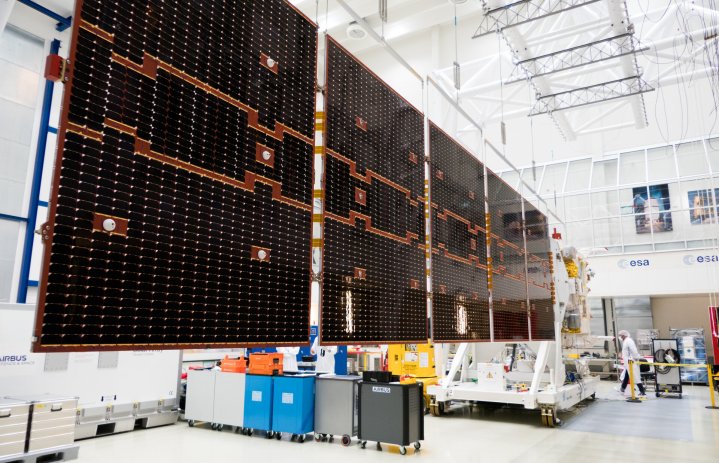The European Space Agency and Japanese Space Agency are preparing to launch a new Earth-monitoring satellite called EarthCARE which will study clouds and aerosols to see how they interact with the atmosphere. The solar panel wing of the craft was unfurled for the first time.
There is an atmospheric lidar, a cloud radar, a multispectral imager, and a broadband radiometer at EarthCARE. Understanding the relationship between clouds, aerosols, radiation, and climate change requires the use of this range of instruments. The satellite has a five-panel solar wing because it requires a lot of power.

The wing has to be folded up to fit inside the nose cone of the rocket which will launch the satellite. The wing has been deployed for the first time at a testing facility in the Netherlands.
The solar wing deployment test went very well. The deployment of the large solar wing is important to the mission. wires were used to support the separate panels for the test. The folded wing will be automatically sliced open by a set of thermal knives, releasing it behind the satellite platform.
The video of the wing unfolding can be seen.
The launch of EarthCARE is planned for September 23, 2023.